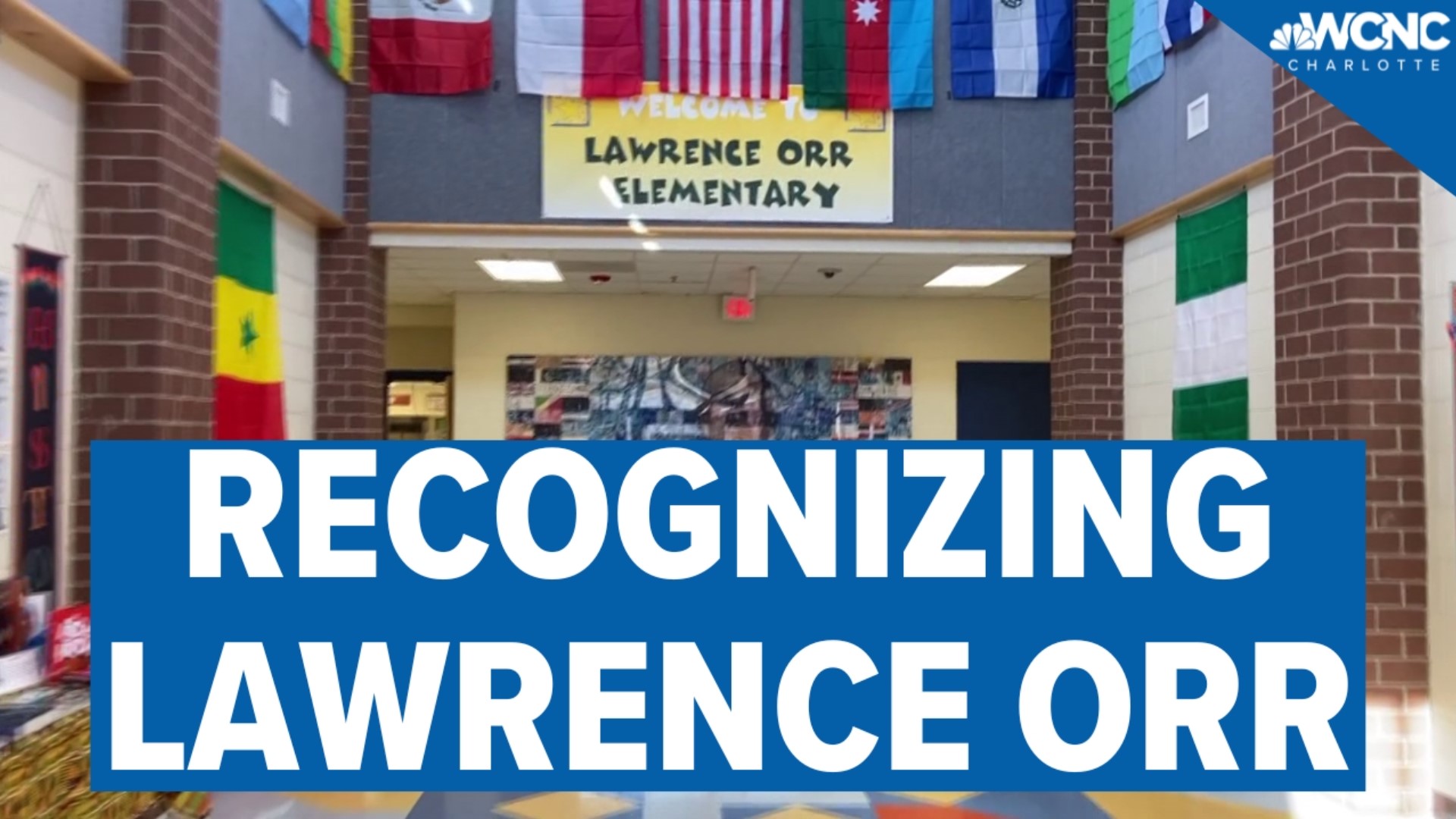CHARLOTTE, N.C. — Over 140 years ago, a man named Lawrence Orr was born.
He was the seventh child of Alexander and Alice Orr, who were formerly enslaved in what is now the Hickory Grove neighborhood of Charlotte.
Orr grew up in a time where Black children were forced to go to school miles away from the neighborhoods where they lived.
Despite this, he became a pillar in Charlotte’s Black community, petitioning for new schools for Black children in the area.
In 2015, Orr received the honor of having a school named after him. Now, in 2023, his descendants are working to continue his legacy and keep his story alive.
When you walk into Lawrence Orr Elementary, you see a portrait of the man whose impact is enduring. Orr's immediate family members were enslaved and forced to work the land on which Lawrence Orr Elementary now sits.
"I can't imagine what it was like growing up in that time period, where basically, you were behind the eight ball just for being Black," said Sean Rhinehart Sr., Lawrence Orr's great, great-grandson.
"He [Lawrence Orr] passed away in 1946 and and my mother, Queen Norwood Thompson, was a month old when he passed away," said Jody Marshall, Lawrence Orr's great-granddaughter.
Despite neither being old enough to meet their grandfather, his legacy and its impact were heard daily while they were children.
"He ran a tight ship, as most people would like to say," Rhinehart said.
Orr believed in land ownership, civic engagement and the right for all children to have an education.
"It really took tenacity, it took people who would be dedicated to seeing that young people in this area, were educated," Marshall said.
Orr and other African Americans petitioned the county school board to build four new schools for African American children in the Hickory Grove area and surrounding counties.
"During that period of time, there were repercussions for going against the grain for fighting injustice, and people did suffer because of that," Marshall said. "However, the great story, or the great thing about this endeavor is it wasn't just one person, it was a group of people who came together."
At the Lawrence Orr Elementary School, students who walk the hallway are reminded of his history everywhere they go.
"We have an opportunity during assemblies and when we have group time," said Melanee Duncan Friday, the principal of Lawrence Orr Elementary. "And then our special area classes, to be able to let our students know about Mr.Orr and his legacy and just share with them that they have the possibility to be anything."
Speaking about the everlasting legacy of racism, slavery, and African-American history has seen push-back on the national and state level in North Carolina.
Duncan Friday says stories like Orr's are vital for all ages.
"If you don't acknowledge history, then it begins to repeat itself," Duncan Friday said. "And I have seen over the years how we have begun to get back in cycles, segregation, by way of socioeconomics and race. It is a thing. It's a part of our culture."
The U.S. Government Accountability Office reports students who are poor, Black, and Hispanic generally attend schools with fewer resources and worse outcomes.
This is mostly due to district boundaries which define the schools a student can attend. GAO says since public education is partially funded by local property tax revenues, lower-income communities generally have fewer resources available for schools.
The Department of Education, under the Biden administration, has an ongoing list of ways it's attempting to bridge the equity gap for Black students in K-21 schools.
"Our city is segregated. I don't want our resources to be segregated," Duncan Friday said.
GAO reports that during the 2020-21 school year, more than a third of students, about 18.5 million, attended schools where 75% or more of the students were of a single race or ethnicity. The report states that this outcoe is a result of district boundaries often determining which school a student can attend and these can contribute to continued division along racial and ethnic lines.
Allowing students to participate in magnet programs and urging state and local governments to increase the resources in communities are some of what schools like CMS do to try and bridge the equity gap.
Orr was able to get the Chalotte-Meclkenburg area one step closer to the ideal of racial equality and equity when he was alive.
"He's just not a person that was self-centered, you know, he took and looked at the big picture and how big that picture is and influenced, not just a family, but a community," Rhinehart said.
Shamarria Morrison: Contact Shamarria Morrison at smorrison@wcnc.com and follow her on Facebook, Twitter and Instagram.

